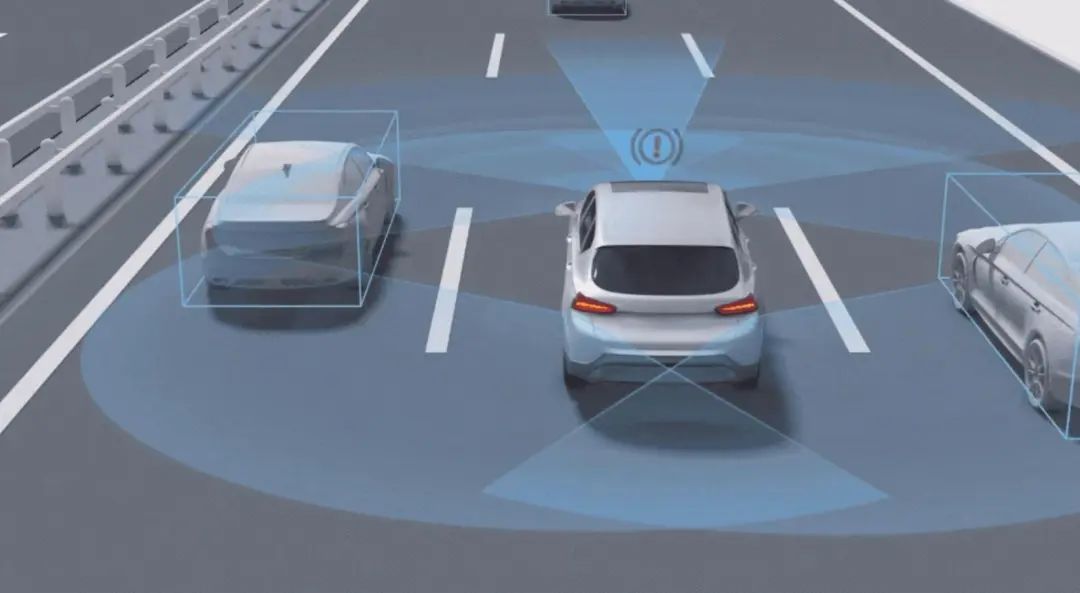When New Energy Vehicles Pivot from Intelligent to Assisted Driving: Is Autonomous Driving's Future Still Bright?
![]() 05/14 2025
05/14 2025
![]() 585
585
In recent years, the promotion of autonomous driving by various new energy vehicle companies has been relentless, with various intelligent driving campaigns emerging in rapid succession. However, there has been a sudden shift in tone, with new energy vehicle companies becoming notably silent on the subject of intelligent driving. Does this silence herald the end of autonomous driving's prospects?

I. When New Energy Vehicles Pivot from Intelligent to Assisted Driving
According to the 21st Century Business Herald, Xiaomi's official website has adjusted the wording on the SU7 new car ordering page, renaming "intelligent driving" to "assisted driving." Specifically, Xiaomi SU7 Standard Edition's "Xiaomi Intelligent Driving Pro" has been renamed to "Xiaomi Assisted Driving Pro," while the Xiaomi SU7 Pro and Xiaomi SU7 Max's "Xiaomi Intelligent Driving Max" have been renamed to "Xiaomi End-to-End Assisted Driving."
The New Consumer Daily reports that reporters recently visited brand stores of Li Auto, NIO, Xiaomi, AVATR, XPeng, and Hongmeng Zhixing in cities like Shenzhen and Taiyuan and found that sales staff in these stores have become cautious in their promotional discourse. Some automakers have shifted their focus to other selling points and only provide explanations on assisted driving when customers actively inquire.
On April 16, the First Department of Equipment Industry of the Ministry of Industry and Information Technology organized a promotion meeting on product access and software online upgrade management for intelligent connected vehicles. The meeting emphasized that automakers must clarify system functional boundaries and safety response measures, prohibit exaggerated and false promotion, fulfill the obligation to inform, assume responsibility for production consistency, quality, and safety, and improve the safety level of intelligent connected vehicle products.

From L2, L2+, to "intelligent driving," as the autonomous driving systems of new energy vehicles continue to evolve, the terminology used to describe these systems has become increasingly mysterious and vague, often serving as a selling point.
In 2014, SAE International released the "J3016 Standard," dividing autonomous driving technology into six levels from L0 to L5: L0 emergency assistance, L1 driving assistance, L2 partial automation, L3 conditional autonomous driving, L4 highly autonomous driving, and L5 fully autonomous driving. This classification has become the most widely accepted definition system for autonomous driving.
From a commercial perspective, due to the reluctance to assume responsibility for accidents in autonomous driving systems, L3-level autonomous driving has become an unattainable goal for automakers' intelligent driving systems, always just out of reach.
For instance, in the past two years, some OEM automakers have used the term "L2+" when promoting their autonomous driving systems, indicating an upgraded version of L2. Other automakers have followed suit, introducing terms like L2++, L2+++ to emphasize the superiority of their systems.
According to an incomplete count by China Times reporters, following the Ministry of Industry and Information Technology's issuance of the "Regulatory Order" on assisted driving, Tesla, XPeng, Li Auto, NIO, AVATR, IM Motors, and other automotive brands have adjusted their related promotions.

II. Does Autonomous Driving Still Have an Opportunity Post-Renaming?
Amidst the shift in promotional strategies by new energy vehicle companies, with "intelligent driving" no longer being mentioned, can the future of autonomous driving still be optimistic?
Firstly, the autonomous driving technology currently employed by most automakers is not truly autonomous. Most new energy vehicles on the market are at the L2 level of partial automation, meaning the vehicle can achieve automatic steering, acceleration, and braking under specific conditions, but the driver still needs to stay alert and be ready to take over at any time. Despite manufacturers using terms like "intelligent driving" or "autonomous driving" in their promotions, these technologies are still far from achieving full autonomy.
However, the irregularity in such market promotions may lead to consumer misunderstandings about autonomous driving technology, thereby affecting their trust in new technologies. For example, some consumers may mistakenly believe that they can completely relinquish control after purchasing a vehicle with "autonomous driving" capabilities, posing a significant safety hazard. Therefore, it is crucial for the government and industry organizations to strengthen supervision and require manufacturers to describe their technologies' actual capabilities more accurately in promotions.
Such regulatory measures actually aid the healthy development of the entire industry. By clarifying the actual level of technology, consumers can make more informed product choices, and it encourages enterprises to focus more on tangible results rather than excessive marketing in technology research and development.

Secondly, renaming intelligent driving as assisted driving is a step back to the right track. While it may seem like a simple name change, it signifies an important shift for the entire industry. On the surface, it appears that autonomous driving has taken a step back, shifting from the previous "intelligent driving" concept, which sounded closer to full autonomy, to emphasizing the concept of "assistance." However, in the long run, this is extremely beneficial for the industry.
On one hand, it helps reshape consumer trust. When automakers rename it as assisted driving, consumers will more clearly understand the actual nature of the driving functions currently provided by the vehicle—that it is merely an auxiliary means and not fully autonomous driving capable of replacing human intervention. This can avoid excessive consumer expectations and unnecessary disappointments due to misunderstandings, thereby enhancing trust in the entire automotive industry's autonomous driving technology development.
On the other hand, standardized naming helps enterprises focus more on technology research and development. Without being constrained by overly exaggerated concepts, enterprises can devote themselves more solidly to technological advancements. For instance, enterprises can invest more resources in enhancing the stability, safety, and intelligence of L2-level assisted driving technology, laying a solid foundation for the development of higher-level autonomous driving. As Li Xiang said, "Intelligent driving is currently like the darkness before dawn." This stage may seem like a setback but is actually building strength for a genuine breakthrough in the future.

Thirdly, no technological development is smooth sailing. We must recognize that the evolution of any technology takes time and inevitably goes through repeated and tortuous processes. Autonomous driving, as a technological revolution with significant epoch-making potential, will undoubtedly encounter setbacks along the way, which is the inevitable law of technological development.
From a technological evolution perspective, autonomous driving encompasses multiple complex technological fields, such as sensor technology, computer vision, artificial intelligence algorithms, and high-precision maps. These fields are constantly evolving and need to coordinate to achieve full autonomous driving. For instance, various radars need continuous improvement in accuracy and reliability to accurately perceive the surrounding environment; computer vision technology must better recognize various objects and road conditions; artificial intelligence algorithms require continuous optimization to handle complex decision-making scenarios; and high-precision maps need constant updates to ensure consistency with actual road conditions. This explains why autonomous driving technology cannot achieve a complete breakthrough in a short period.
This is akin to the early days of steam engine technology, which faced issues like low efficiency and poor safety but eventually spurred the Industrial Revolution after continuous improvements by countless scientists and engineers. For intelligent driving enterprises, amidst this tortuous development process, they must steadfastly focus on technology. Enterprises should not be swayed by short-term market fluctuations or public opinion but instead concentrate on the research, development, and innovation of core technologies. Only by continuously improving technological levels and solving technological challenges can they secure a place in the future autonomous driving market.

Fourthly, in the long run, the development of autonomous driving is an inevitable trend. With societal advancements and scientific and technological progress, people's demands for convenient, safe, and efficient travel are increasing, and autonomous driving technology can precisely meet these needs.
On one hand, autonomous driving can bring immense social and economic benefits. In terms of traffic safety, it can reduce accidents caused by human error and improve road safety. According to statistics, the vast majority of traffic accidents are human-induced, and autonomous driving systems can avoid these errors through precise perception and rapid decision-making. In terms of traffic efficiency, autonomous vehicles can achieve more efficient driving and scheduling, reduce congestion, and enhance road utilization.
On the other hand, consumer demand for autonomous driving is growing. With improved living standards and a pursuit of technology, more consumers aspire to a more convenient and comfortable driving experience. Autonomous driving can not only alleviate driving fatigue but also provide more leisure and work time. For instance, during long-distance travel, passengers can rest, entertain, or work while the vehicle is in autonomous mode, enhancing the quality of travel.
Therefore, when new energy vehicles pivot from "intelligent driving" to "assisted driving," returning to the essence of technology, this is not a setback for autonomous driving's development but an important step towards standardized and healthy development. While autonomous driving technology faces many challenges and setbacks in its development, its long-term prospects remain bright, and the gradual maturity of the technology is an inevitable market trend. Have autonomous driving enterprises recognized this?








